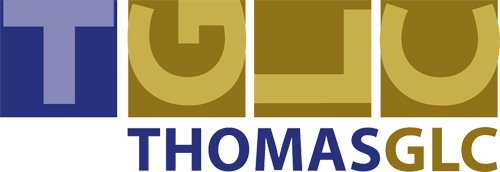On 2 May 2010, the Government released to the public, the "Henry Report" on the future of Australia's taxation system.
In all, there are 138 recommendations – more than 100 of which the Government has put its response to, on the "back-burner", probably until after the next election.
Many of the recommendations will cost taxpayers dearly should they become law. For example, recommendations still "live" include:
· taxing fringe benefits in the hands of employees;
· removing important small business concessions (e.g., the 50% active asset reduction and the 15 year exemption);
· taxing superannuation contributions in the hands of employees; and
· changing the nexus rules making it more difficult to claim personal tax deductions.
Below is a summary of the taxation measures actually announced by the Government, as part of its response to the Henry Report.
1. Taxation measures announced by Government
1.1 Increasing the Superannuation Guarantee ('SG') contribution rate
The SG contribution rate will be increased to 12% by 2019-20 (from the current 9%), with gradual increases commencing on 1 July 2013, as outlined in the following table.
Income Year SG contribution rate (%)
2013-14 9.25
2014-15 9.5
2015-16 10
2016-17 10.5
2017-18 11
2018-19 11.5
2019-20 12
1.2 Increasing the SG age limit from 70 to 75
From 1 July 2013, the SG age limit will be increased to 75 years (currently 70 years), which means that for the first time, employees aged 70 to 74 will generally be eligible to have SG contributions made on their behalf.
1.3 Low income earners Government contributions
From 1 July 2012, the Government will match concessional contributions made by or for the benefit of individuals with adjusted taxable incomes of up to $37,000. The amount payable by the Government will be calculated at the rate of 15% for each $1 of concessional contributions, with an annual maximum amount payable of $500 (not indexed).
1.4 Concessional contribution caps for people aged 50 or more
From 1 July 2012, individuals aged 50 or above with superannuation balances below $500,000 will be entitled to make concessional superannuation contributions of up to $50,000 without exceeding the cap.
This measure effectively extends the existing transitional concessional contributions cap beyond 30 June 2012, but only for those individuals with account balances below $500,000.
1.5 Cutting the company tax rate
The company tax rate will be reduced as follows:
· For eligible small business companies – the company tax rate will be reduced to 28% from the 2012-13 income year; and
· For other companies – the company tax rate will be reduced to 29% for the 2013-14 income year, and then down to 28% from the 2014-15 income year.
1.6 Capital allowance concessions for small business assets
From 1 July 2012, the following capital allowance (i.e., depreciation) concessions will be available to small businesses:
· An immediate write-off for assets valued at under $5,000 (currently, an immediate write-off is generally available for assets valued at less than $1,000); and
· All other assets (except buildings) can be depreciated in a single depreciation pool at a rate of 30% (currently, small business assets can be allocated to two different pools, according to their effective life – i.e., a general pool or a long-life pool).
1.7 Resource super profits tax
From 1 July 2012, a Resource Super Profits Tax ('RSPT') will be introduced at a rate of 40% on profits made from the exploitation of Australia's non-renewable resources.
The RSPT will replace the crude oil excise, and operate in parallel with State and Territory royalty regimes. Projects within the scope of the Petroleum Resource Rent Tax (PRRT) will have the option of opting into the RSPT or staying in the PRRT. The election into the RSPT will be irrevocable.
Under the RSPT, a refundable credit for royalties paid to State and Territory Governments will be available. The refundable credit will eliminate investment distortions associated with the state royalty systems and ensure there is no 'double taxation' of resource profits.
The Government will consult extensively with stakeholders on the design of the RSPT.
1.8 Resource exploration rebate
A refundable tax offset will be available at the company level (set at the prevailing company tax rate), for exploration expenditure incurred on or after 1 July 2011.
Under this measure, the definition of exploration expenditure will be expanded to include expenditure incurred in exploring for geothermal energy.
All companies will be able to access the Resource Exploration Rebate, to avoid the complexity of defining the concept of an 'Australian small listed exploration company' in the tax law.
To find out more please see the Australian Government website
The Government also released the Australia's Future System Review report. Download Report
Related Pages :
Budget 2022-23 | JobSaver and Micro Business grant reconfirmation | Lockdown support for business | Budget 2021-22 | Budget 2020-21 | JobKeeper 2.0 from 28 September 2020 V4 | JobKeeper 2.0 from 28 September 2020 V3 | JobKeeper 2.0 Version 2 | JobKeeper 2.0 | JobSeeker | Updated COVID-19 Stimulus & Support Measures | Revised COVID-19 Stimulus & Support Measures | COVID-19 stimulus and support measures | $1,500 JobKeeper Subsidy | Second $66.1 bn Stimulus Package | Stimulus Package | Budget 2019-20 | Thomas GLC Client Portal | Budget 2018-19 | Budget 2017-18 | Super Changes Receive Royal
Ascent | Budget 2016-17
Meet The Team
Contact / Connect
Liability limited by a scheme approved under Professional Standards Legislation

